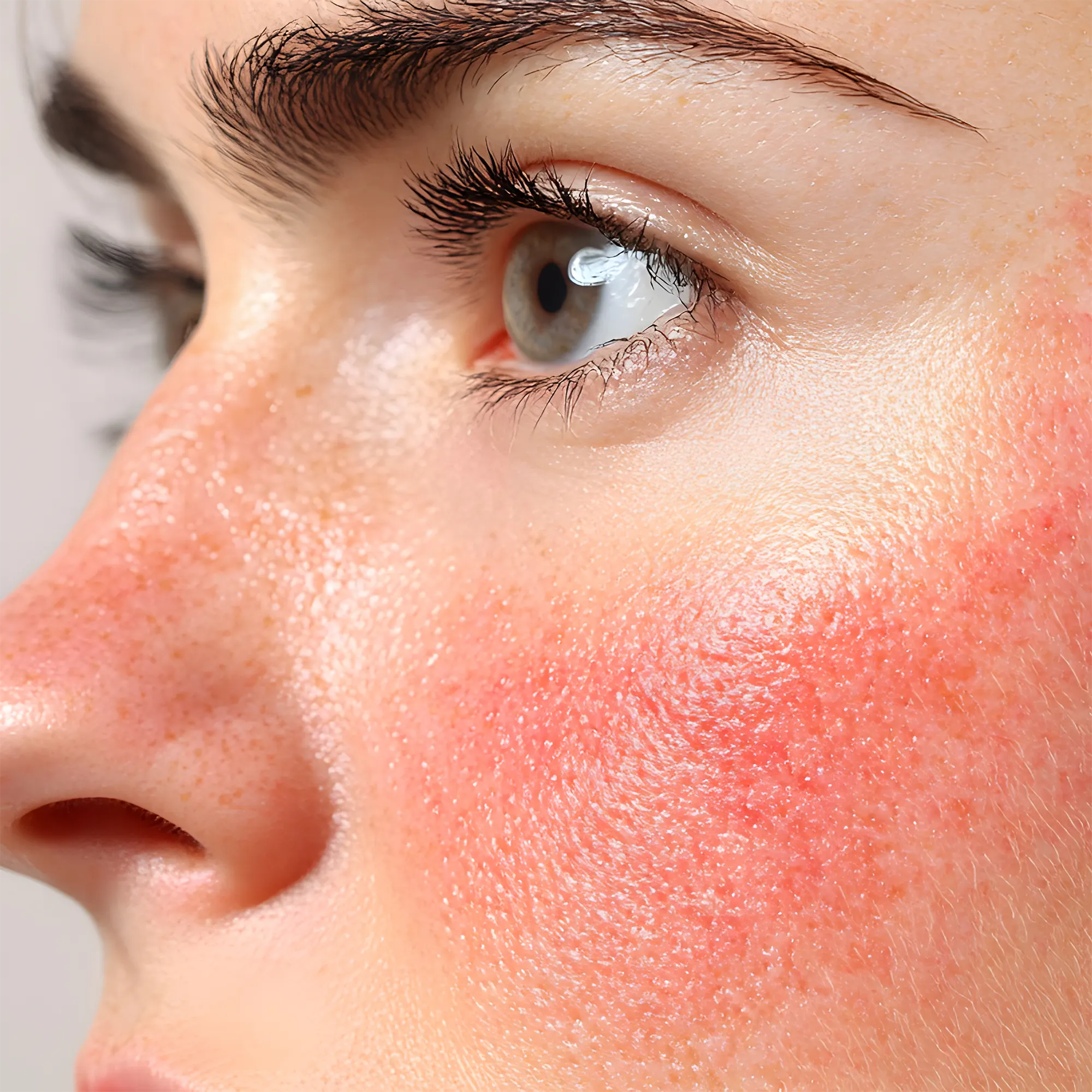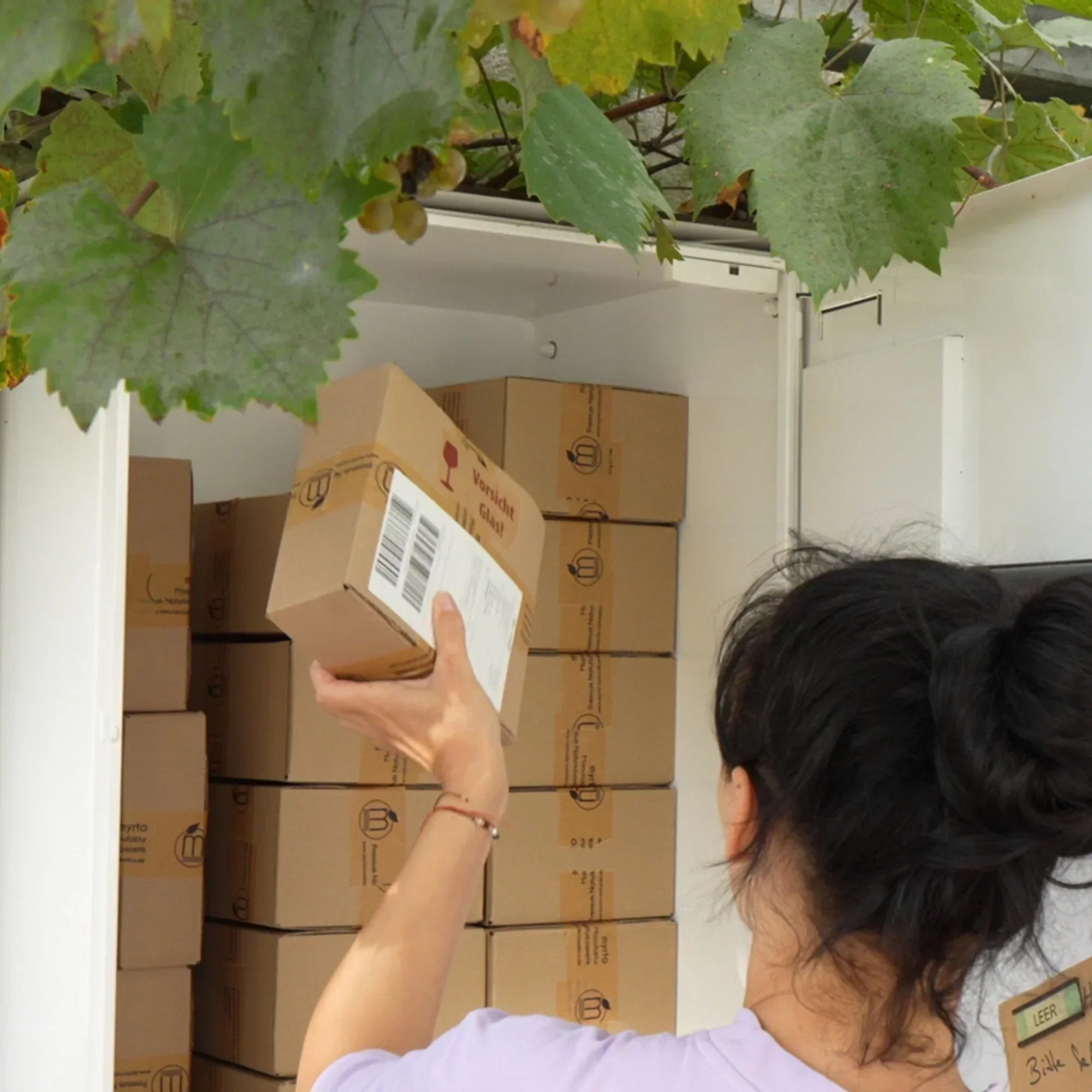In this guide, we explain how to distinguish redness from rosacea from inflammatory pimples in acne—including causes, triggers, dietary tips, and gentle care for sensitive skin.
What is rosacea?
Rosacea is a chronic inflammatory skin disease of the central facial area (cheeks, nose, forehead, chin). Typical symptoms include persistent redness, visible dilated capillaries (telangiectasias), papules/pustules, and a burning or stinging sensation. The skin barrier is often weakened, and the skin reacts sensitively to external stimuli.

Common triggers for rosacea
- UV radiation, heat, sauna
- cold, wind
- Hot drinks, alcohol, spicy foods
- stress
What is acne?
Acne is caused by increased sebum production, hormonal influences, and clogged pores. Blackheads (comedones), inflamed pimples, and pustules form. Acne can affect not only the face but also the back, chest, and shoulders.

Typical causes of acne
- Hormonal fluctuations (puberty, cycle, pregnancy)
- Excessive sebum production & keratinization disorders
- Pore blockage and bacterial colonization
- Inflammatory diet (e.g. high in sugar, certain dairy products)
Symptoms – how do I tell the difference?
| criterion | Rosacea | acne |
|---|---|---|
| Skin redness & vessels | Persistent redness, visible veins (telangiectasias), especially cheeks/nose/forehead | Redness usually only around individual inflamed lesions |
| Pimples & Blackheads | Mostly papules/pustules, no blackheads | Typical: Blackheads (open/closed) plus inflamed pimples |
| Skin type & triggers | Sensitive combination skin, impaired barrier; reacts to triggers (heat, alcohol, sun, stress) | Mostly oily skin; hormonal/sebum-related; pore blockage |
| Affected areas | Central face (cheeks, nose, forehead, chin) | Face, back, chest, shoulders |
| Feel | Burning/stinging frequently | No burning; possibly pressure pain in deep lesions |
Similarities between rosacea and acne
- Inflammation and redness can occur in both.
- Both benefit from gentle, non-irritating care and consistent sun protection.
- Stress management and a balanced diet support skin balance.
Are there mixed forms between rosacea and acne?
Yes, three scenarios are possible:
- Acneiform rosacea : Rosacea with acne-like papules/pustules— without blackheads. Often sensitive to heat, alcohol, or stress.
- Rosacea & Acne Simultaneously : Rosacea in the central part of the face, with additional acne on the chin, back, or chest. Both blackheads (acne) and vascular redness (rosacea) occur.
- Steroid-induced rosacea : Rosacea-like reaction after prolonged use of cortisone creams: red, irritated skin with pimples.
What to do with mixed forms?
- Avoid aggressive acne treatments (e.g., benzoyl peroxide, high-dose retinol, isotretinoin) – these can worsen rosacea.
- Non-irritating basic care : alcohol-free, fragrance-free, without skin-weakening emulsifiers.
- Strengthen the barrier : gentle cleansing, moisture, anti-inflammatory agents (e.g. azelaic acid derivatives, moderate strength BHA, beta-glucan, niacinamide in an adjusted dosage).
- Consistently integrate sun protection .
Nutrition & Triggers
Rosacea
Avoid individual triggers: hot drinks, alcohol, spicy foods; reduce temperature extremes (heat/cold); minimize UV exposure.
acne
A low-inflammatory diet with plenty of vegetables and omega-3s; moderate sugar intake and possibly certain dairy products.
The following applies in common: stress reduction, sufficient sleep and a consistent, gentle care routine support the skin.
Gentle care routines
Routine for rosacea (minimal, non-irritating)
- Cleansing: Mild, non-foaming cleanser with skin-neutral pH, without alcohol/fragrances.
- Soothe & Strengthen: Toner/serum with soothing, barrier-strengthening ingredients.
- Protect: Light, non-occlusive care and daily sun protection.
Routine for acne (minimal, mild)
- Cleansing: Gentle, deep into the pores – without strong degreasing surfactants.
- Clarifying: BHA applied selectively or extensively at moderate frequency; additionally azelaic acid derivative.
- Balance: Light serum/fluid, non-comedogenic; consistent sun protection.
Our product recommendations for rosacea
Note: All myrto products are plant-based, vegan, cruelty-free, and free from alcohol, fragrances, preservatives, and skin-weakening emulsifiers—ideal for sensitive, redness-prone skin.
Our product recommendations for acne
FAQ – Rosacea or acne?
Can rosacea look like acne?
Can I have rosacea and acne at the same time?
Which active ingredients are suitable for mixed forms?
Does diet help with rosacea and acne?
👉 You can find all products for rosacea & acne in our guide.









